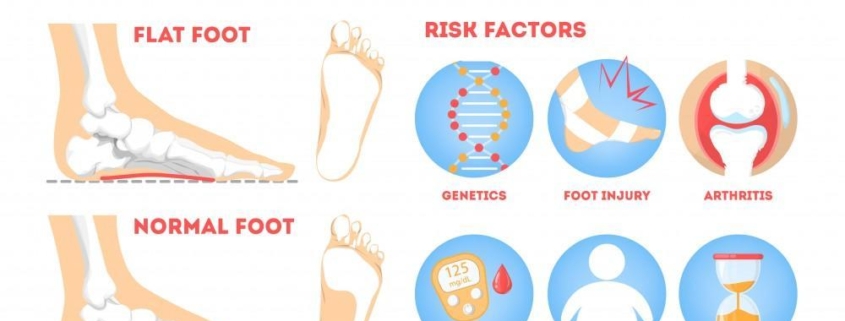Adult Acquired Flatfoot Deformity

Overview
Adult Acquired Flatfoot Deformity (AAFD), also known as Posterior Tibial Tendon Dysfunction, is a condition that results from a change in the shape of the foot. It affects adults and can lead to serious complications if left untreated. The arch of the foot collapses over time, leading to a flatfoot deformity. This progression is often accompanied by pain and difficulty in mobility.
Types
There are primarily four stages in AAFD:
-
- Stage I: The patient experiences pain, but there is no noticeable change in foot shape.
-
- Stage II: The foot arch begins to flatten and deformity becomes visible. This stage can still be managed with non-surgical treatments.
-
- Stage III: Deformity advances and becomes rigid. Conservative treatments are typically ineffective at this stage and surgery may be recommended.
-
- Stage IV: The deformity extends to the ankle, affecting its alignment and causing additional symptoms.
Causes
The main cause of AAFD is the dysfunction or injury of the tibialis posterior tendon, responsible for supporting the arch. Factors contributing to this include:
-
- Obesity
-
- Diabetes
-
- Hypertension
-
- Steroid use
-
- Trauma, such as falls or accidents
-
- Age-related wear and tear
Symptoms
The symptoms of AAFD typically begin gradually and progress over time. They can include:
-
- Pain or swelling in the inside of the ankle
-
- Gradual flattening of the foot’s arch
-
- Outward tilting of the heel
-
- Inability to stand on tiptoe
-
- Foot pain that worsens with activity
Diagnosis
A diagnosis of AAFD begins with a thorough examination of the foot and ankle. The doctor may ask about your symptoms, medical history, and any recent injuries. They may also:
-
- Perform a physical examination to assess pain, function, and alignment
-
- Use imaging tests like X-rays, CT scan, or MRI to evaluate the severity of the deformity and rule out other conditions
Treatment Options
Treatment of AAFD aims to relieve pain and restore function. The choice of treatment often depends on the stage of the condition.
Non-surgical treatments include:
-
- Activity modifications
-
- Non-steroidal anti-inflammatory drugs (NSAIDs)
-
- Casting or bracing
-
- Physiotherapy
-
- Orthotic devices
-
- Weight management
If these conservative treatments are not effective, or if the deformity is severe, surgical options exist:
-
- Tendon transfers
-
- Bone realignment procedures
-
- Joint fusions
Living With Adult Acquired Flatfoot Deformity
Living with AAFD can be challenging, but managing the symptoms is possible with the right approach.
-
- Wear comfortable, supportive footwear and custom orthotics if prescribed
-
- Maintain a healthy weight to reduce pressure on your feet
-
- Follow a regular exercise regime to strengthen foot muscles
-
- Take prescribed medication as directed and keep up with regular doctor appointments
-
- If surgery is necessary, adhere to all post-operative instructions for the best recovery possible
When to Seek Help
You should seek immediate help from a healthcare professional if you experience:
-
- Persistent pain in your feet
-
- Significant change in the shape of your foot
-
- Increasing difficulty in normal tasks such as walking or standing
-
- Symptoms that do not improve with over-the-counter medications and rest
Living with Adult Acquired Flatfoot Deformity can be challenging, but with the right diagnosis, treatment, and lifestyle adjustments, you can continue to lead an active and fulfilling life. Always consult with your healthcare professional to get accurate information and treatment options suited to your personal case.
